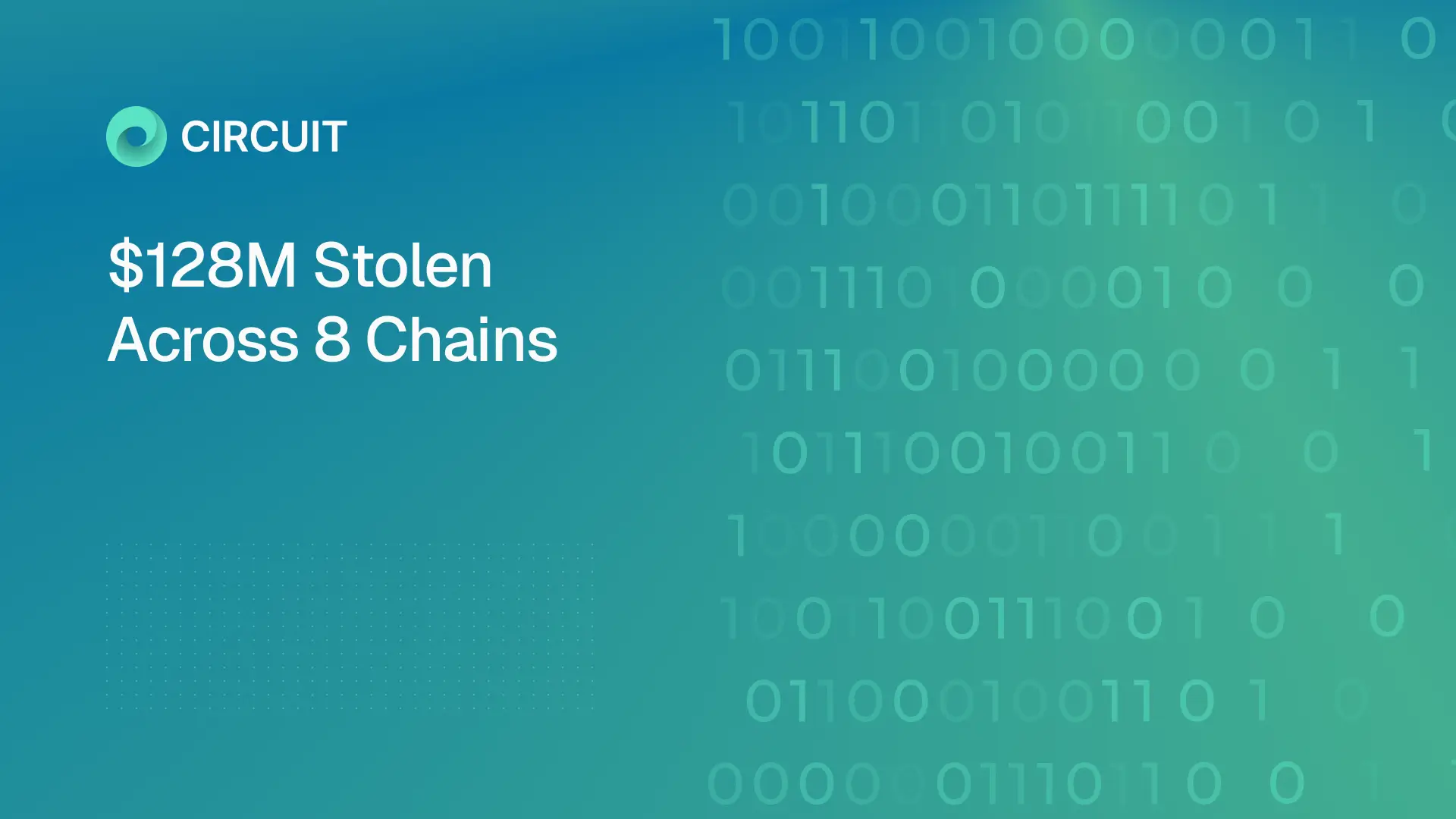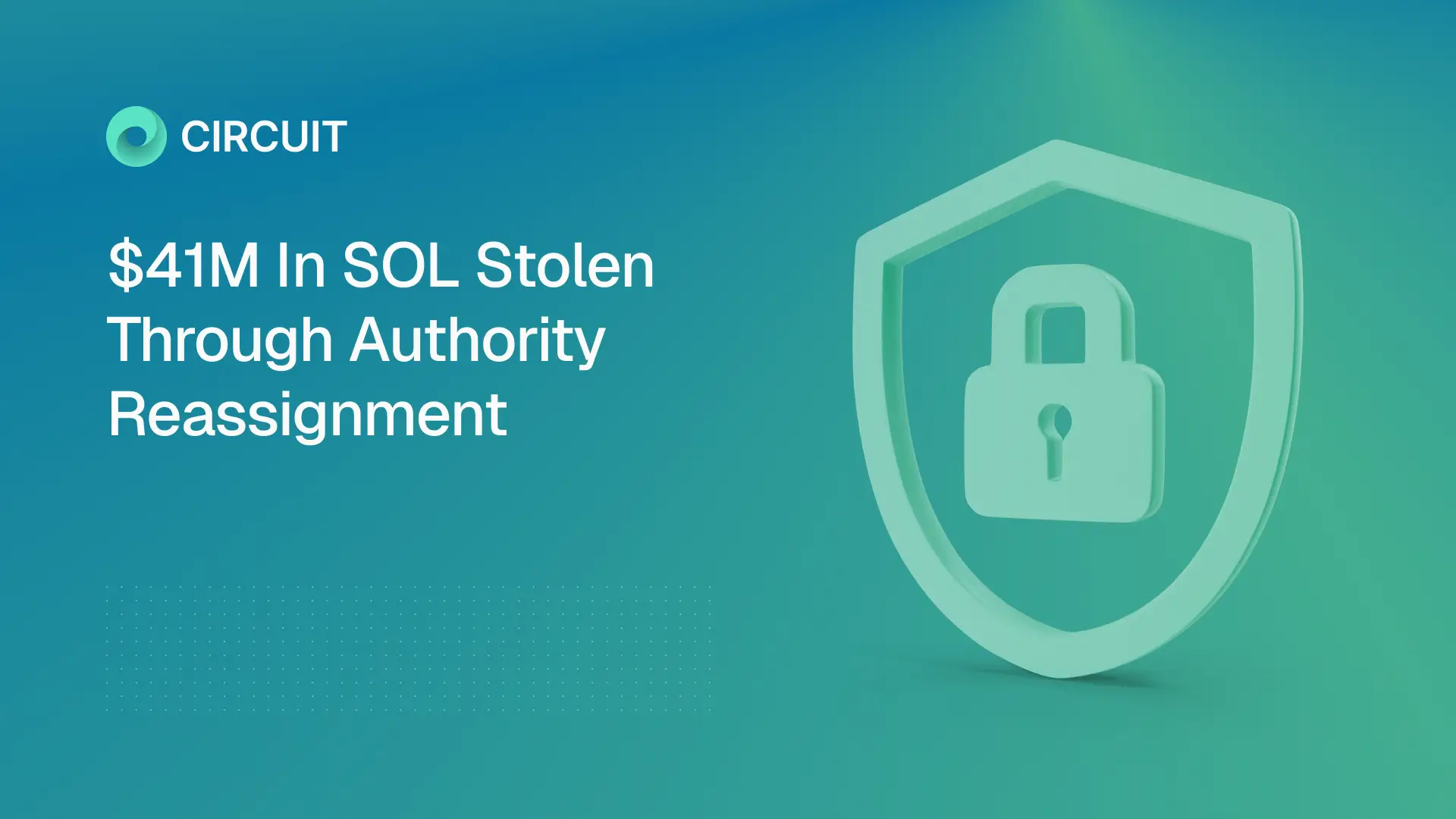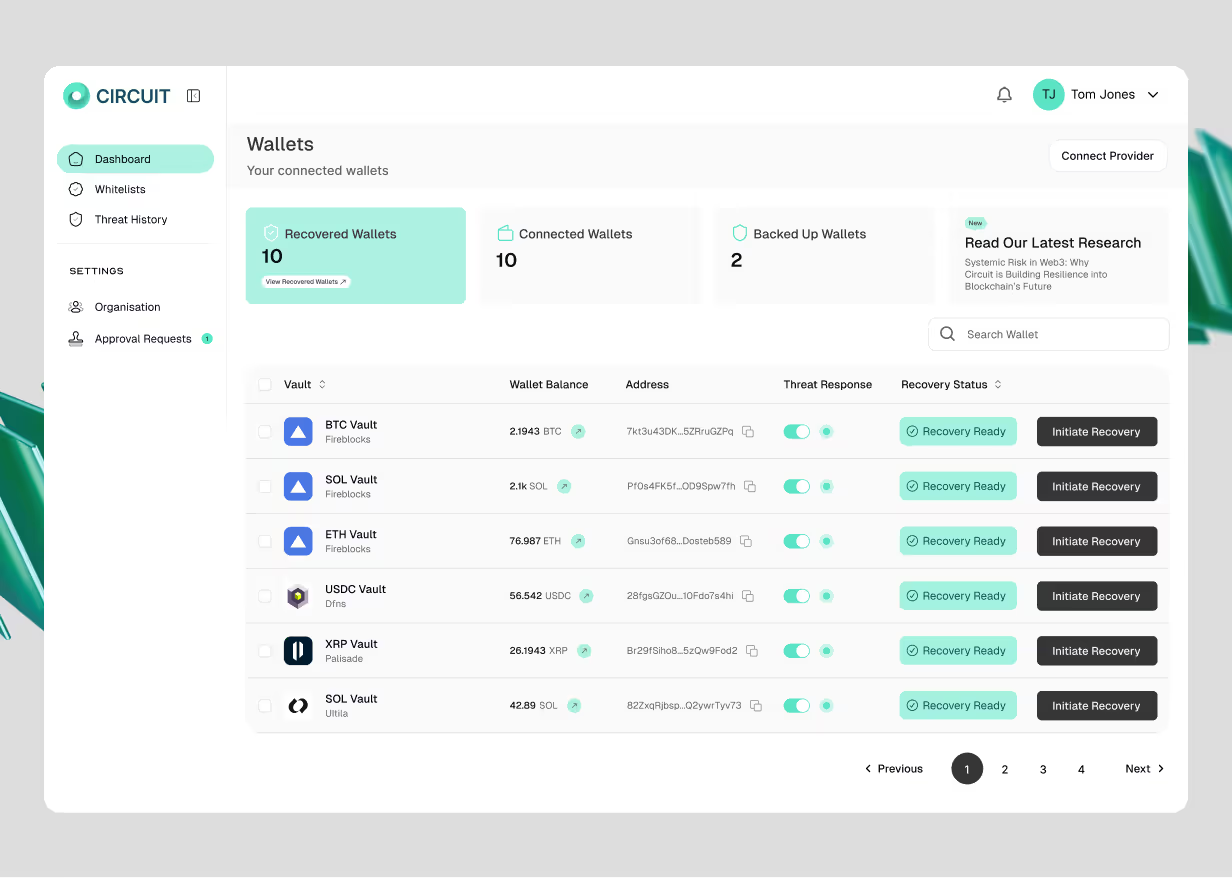
By Tom G, Head of Growth, Circuit.
As someone who has been immersed in the blockchain industry for years, I’ve witnessed firsthand its potential to revolutionize financial systems. The power of decentralized technology, the ability to secure and transfer assets without intermediaries, and the promise of 24/7 market access are all major leaps forward. But with this rapid progress comes a darker reality that few are addressing: the systemic risks threatening the very foundation we are building on.
Working at Coincover, I learned a great deal about disaster scenarios and recovery processes. It became clear to me that as digital assets grow in both value and adoption, the industry has yet to fully tackle the problem of market continuity. We often think about business continuity—what happens if one company or service goes down—but in web3, the problem is bigger. If one major player in custody or technology fails, the ripple effect can paralyze businesses for weeks, creating chaos throughout the ecosystem.
It was this insight that led me to join Circuit. At Circuit, we are building something that goes beyond just securing assets. We are focused on addressing the underlying risks that could destabilize web3 as it scales. Concentration risks, counterparty risks, and outdated recovery processes are not just theoretical concerns—they are real threats that, if not addressed, could undermine everything blockchain stands for. As the world increasingly shifts its financial rails onto blockchain, the stakes have never been higher.
This article is about why we are building Circuit, how we are addressing the systemic risks present in the industry, and why this matters for the future of blockchain. I’ll discuss the problems we face today, the solution we’re creating, and how Circuit is helping build a more resilient and decentralized future for web3.
The Problem: Concentration, Counterparty Risks, and Recovery Challenges
As web3 continues to expand, businesses that hold digital assets are becoming alarmingly dependent on a small number of custodial services and technology providers. This over-reliance creates systemic risks that threaten both business and market stability in the event of a failure.
- Concentration Risk: The web3 ecosystem is centralized around a few major custodial and technology providers. If one of these providers experiences an outage, businesses relying on them could lose access to their assets for an extended period. This creates a serious market continuity problem, as the failure of a single provider could cause widespread disruption.
- Counterparty Risk: Many businesses rely on "trusted third parties" like Coincover or Nemean for asset recovery services. This means they must trust these providers not only with their cryptographic key materials but also with meeting their SLAs in the event of a crisis. However, if a large-scale outage occurs, it’s doubtful that these providers could recover hundreds or thousands of private keys in time. Lengthy verification processes would likely take weeks, leaving businesses stuck and unable to access their assets.
- Internal Recovery Processes and the MPC Paradox: Some businesses manage their own backups, particularly those using Multi-Party Computation (MPC) wallets. MPC distributes key materials across multiple parties to enhance security, preventing any single entity from controlling the entire private key. However, when businesses need to initiate a backup, they must first reconstitute the key to create an exportable backup file. This step—reassembling the private key—often requires storing the key material on-premises or in a single location, introducing significant risks. By doing so, businesses undermine the very security that MPC is designed to provide, exposing themselves to vulnerabilities should anyone gain access to these backup files.
- Lack of Predefined Backup Destinations: Even when businesses can recover their assets, they often don’t have a designated backup destination to move those assets to. In the midst of a crisis, this leads to a chaotic scramble to find and onboard a new custodian or technology provider. Without a predefined destination, recovery becomes even more complex, lengthening downtime and increasing the risk of further financial damage.
These are not hypothetical risks—they are real and growing. As web3 scales, the industry will face these problems head-on, and the current infrastructure isn’t ready to handle them.
The Solution: Automated, Keyless Recovery and Distributed Risk
At Circuit, we believe that the future of web3 depends on addressing these systemic risks, and we’re building technology to solve them. Our approach focuses on automating recovery processes, eliminating the need to trust third parties, and ensuring that businesses have predefined backup destinations to resume operations instantly. Here’s how we’re tackling the problem:
- Keyless Technology That Removes the Need for Trust: Circuit’s recovery solution is built on keyless technology, meaning businesses no longer have to trust third-party custodians with their cryptographic key materials. Our system ensures that no keys are exposed to external parties, reducing counterparty risk while giving businesses full control over their assets. This trustless recovery solution is key to distributing risk and eliminating reliance on any one provider.
- Automated Solutions That Bypass Manual Procedures: Relying on manual processes to recover assets, as many do today, is no longer viable. Circuit automates recovery, bypassing the need for third-party processes that slow everything down. Our system ensures that businesses can recover assets and resume operations immediately, even during a large-scale outage. By automating recovery, we eliminate the risks of human error and delays that plague manual processes.
- Recovery Rails with Predefined Backup Destinations: Circuit creates recovery rails—predefined pathways that automatically move assets to designated backup destinations in the event of a failure. This allows businesses to immediately meet their recovery time objectives (RTOs) and resume operations without the need to scramble for a new custodian. Having these predetermined recovery pathways in place ensures business continuity even in the worst-case scenario.
- Distributing Risk Across the Web3 Ecosystem: One of Circuit’s primary goals is to distribute risk across the ecosystem. By enabling businesses to automate recovery and designate backup destinations, we ensure that no single point of failure can bring down a business—or the market. This approach strengthens the web3 ecosystem as a whole, providing a safety net for businesses in an otherwise fragile environment.
Why This Matters for Blockchain’s Future
The future of financial systems is increasingly shifting to blockchain. As this transition accelerates, the need for a more resilient, decentralized infrastructure becomes essential. If we fail to address the systemic risks that come with concentration, counterparty dependence, and outdated recovery methods, we risk building an ecosystem that is fragile, centralized, and vulnerable to collapse.
At Circuit, we believe the time to solve these problems is now, before a major failure forces the industry to confront them. Our mission is to de-risk the web3 ecosystem by providing businesses with the tools they need to operate confidently, even in the face of widespread failures. By ensuring automated, trustless recovery and creating recovery rails with predefined backup destinations, we are helping businesses protect their assets and maintain continuous operations—no matter what happens.
We are building Circuit to safeguard the future of web3, ensuring that the decentralized promise of blockchain is realized not just in theory, but in practice. The risks are real, but they are solvable—and at Circuit, we are committed to building the resilience that the blockchain industry needs to thrive.
Related Posts
Discover more about Circuit’s latest News and Research

How The $128m Balancer Exploit Happened
On November 3rd, 2025, an attacker weaponized Balancer’s rounding errors and complex features to manipulate token prices and steal $128 million across eight blockchains - all within two hours.

Inside the SEC’s Crypto Task Force Roundtable
No policy emerged, but the SEC’s private roundtable exposed how crypto’s core principles clash with outdated financial rules-and why new regulatory frameworks are needed.

SwissBorg/Kiln Exploit Breakdown
How $41M in SOL was stolen when a routine-looking transaction secretly reassigned staking account authority to attackers - leading to a full drain eight days later.

Built by experts who’ve made digital assets safer, and now, recoverable.
We believe asset recoverability is table stakes for the next era of digital assets.



